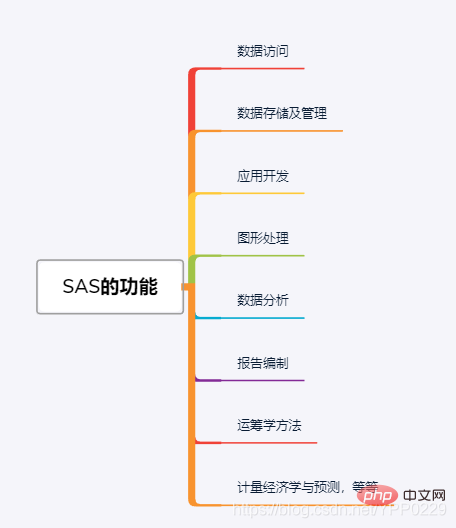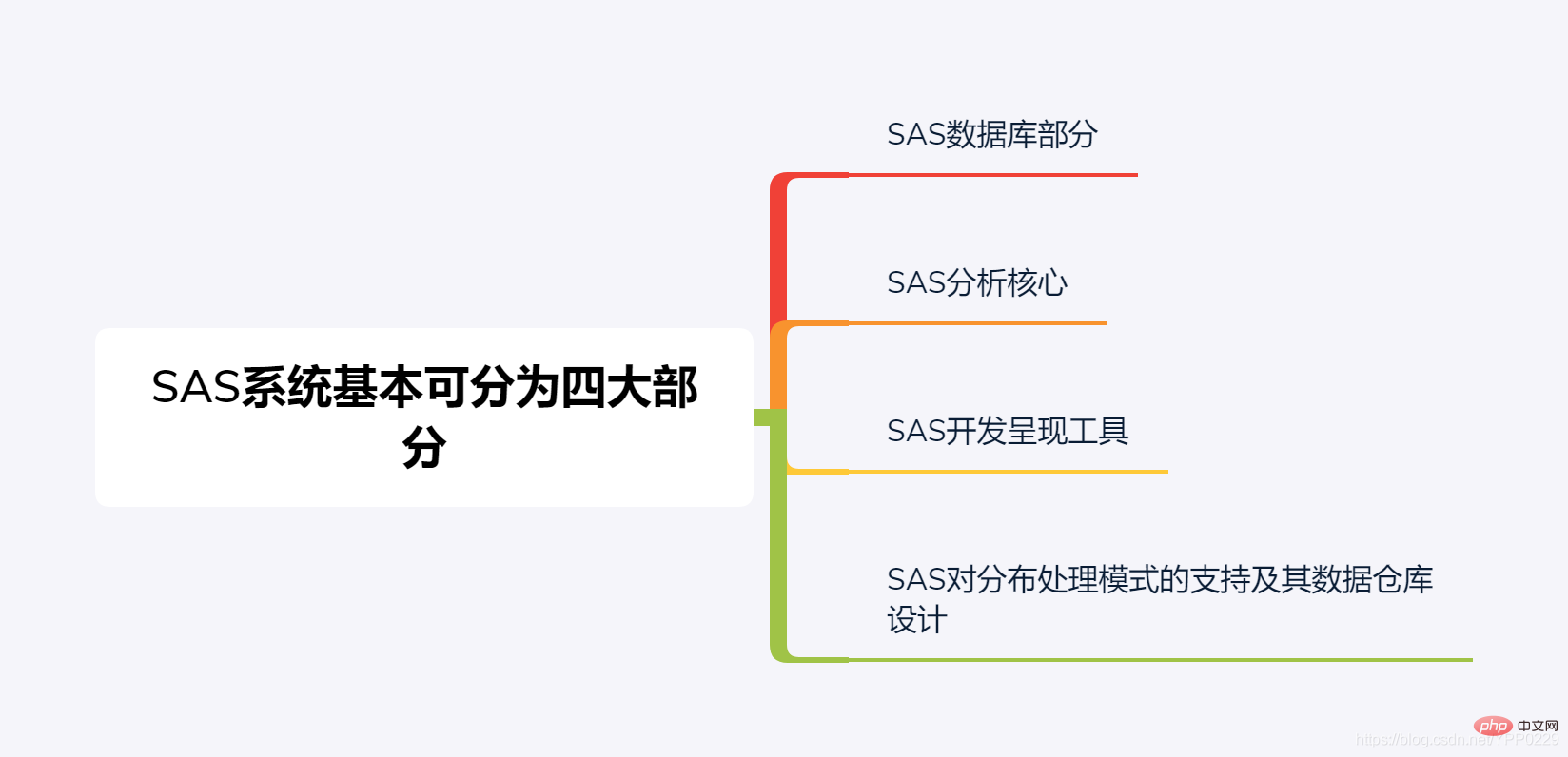sas is a modular, integrated large-scale application software system that can be used to collect, organize, analyze and express data. The functions of the SAS system include data access, data storage and management, application development, graphics processing, data analysis, report preparation, operations research methods, econometrics and forecasting, etc.

The operating environment of this tutorial: Windows 10 system, Dell G3 computer.
If you want to perform big data analysis through statistical software, you also need the following skills:
1. Applied mathematics is required , Mathematics knowledge background at undergraduate or master's level in statistics or quantitative economics.
2. Be proficient in at least one of the data analysis software such as SPSS, STATISTIC, Eviews, SAS.
3. At least be able to use Acess for database development;
4. Master at least one mathematical software: matalab, mathmatics to build new models.
5. Master at least one programming language;
6, of course, you also need knowledge in other application fields, such as marketing, economic statistics, etc., because this is the main application of data analysis field.
SAS (Statistical Analysis System) is a modular, integrated large-scale application software system that can be used to collect, organize, analyze and present data.
It is composed of dozens of dedicated modules. Its functions include data access, data storage and management, application development, graphics processing, data analysis, report preparation, operations research methods, and econometrics. with predictions and more.
The Base SAS module is the core of the SAS system. All other modules run in the environment provided by Base SAS. Users can select the required modules to form a customized SAS system together with Base SAS.

The SAS system can basically be divided into four parts: SAS database part; SAS analysis core; SAS development presentation tool; SAS distributed processing mode support and its data warehouse design.

The SAS system mainly completes four major data-centered tasks: data access; data management (the data management function of SAS is not very good, but the data The analysis ability is strong, so I often use Microsoft products to manage data and then import it into SAS data format. Pay attention to the use with other software); data presentation; data analysis. 
If you can use SAS well, you will be very good.
The basis of the SAS system is the SAS language, which defines statistical analysis methods as calculation processes, which can be called directly during statistical analysis ;Since SAS modules are composed of executable files, they are called SAS procedures.
SAS program consists of a series of statements that conform to the syntax rules of SAS language, just like using any Programs written in various computer languages are the same. SAS language not only provides statements that general programming languages have (such as loop control, conditional judgment, assignment, input and output, etc.), but also , its rich probability functions, quantiles Functions, sample statistics functions, and random number functions are unmatched by other languages.
The basic composition of a SAS program is:
For more related knowledge, please visit the FAQ column!
The above is the detailed content of What does SAS software do?. For more information, please follow other related articles on the PHP Chinese website!